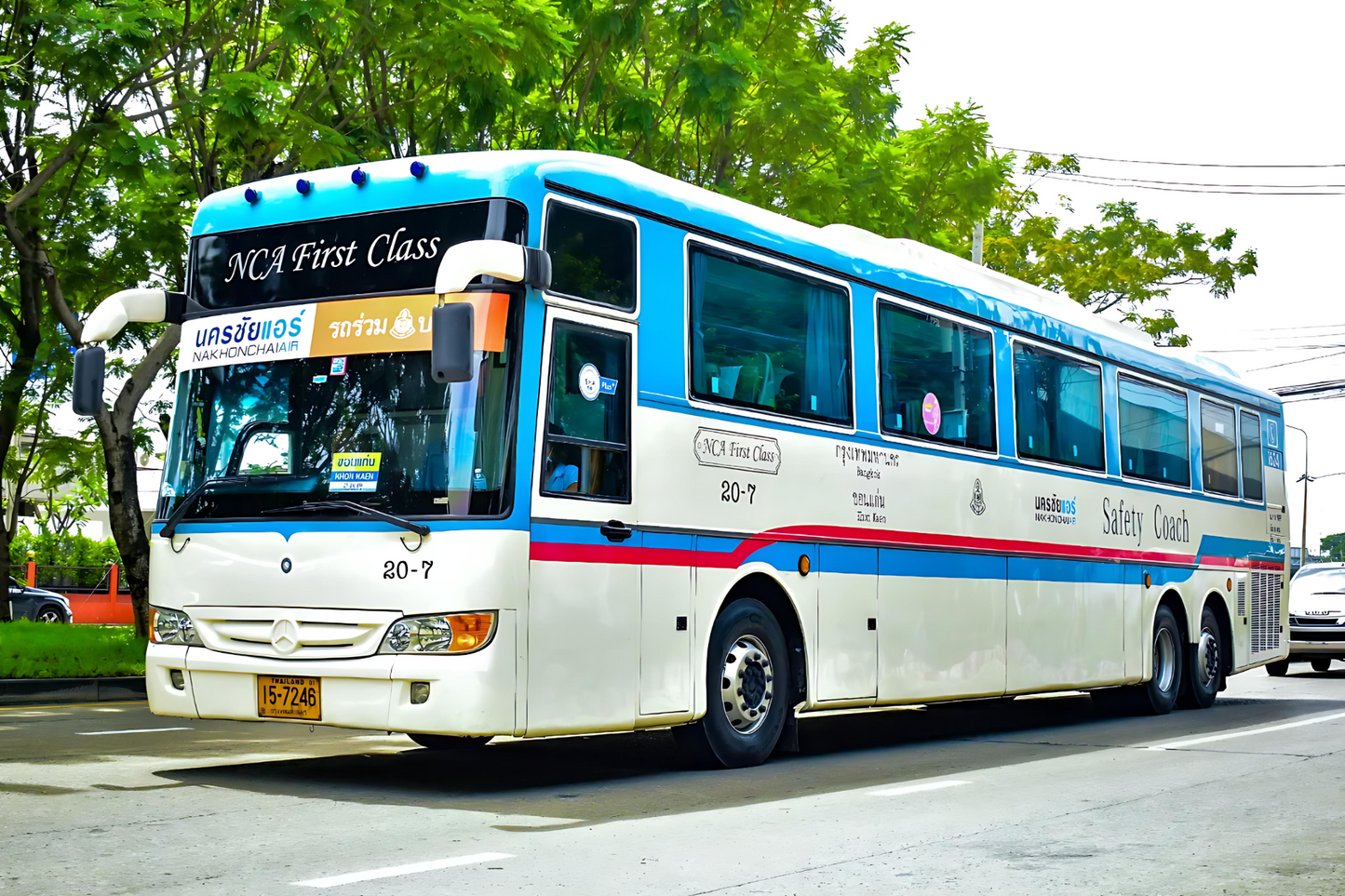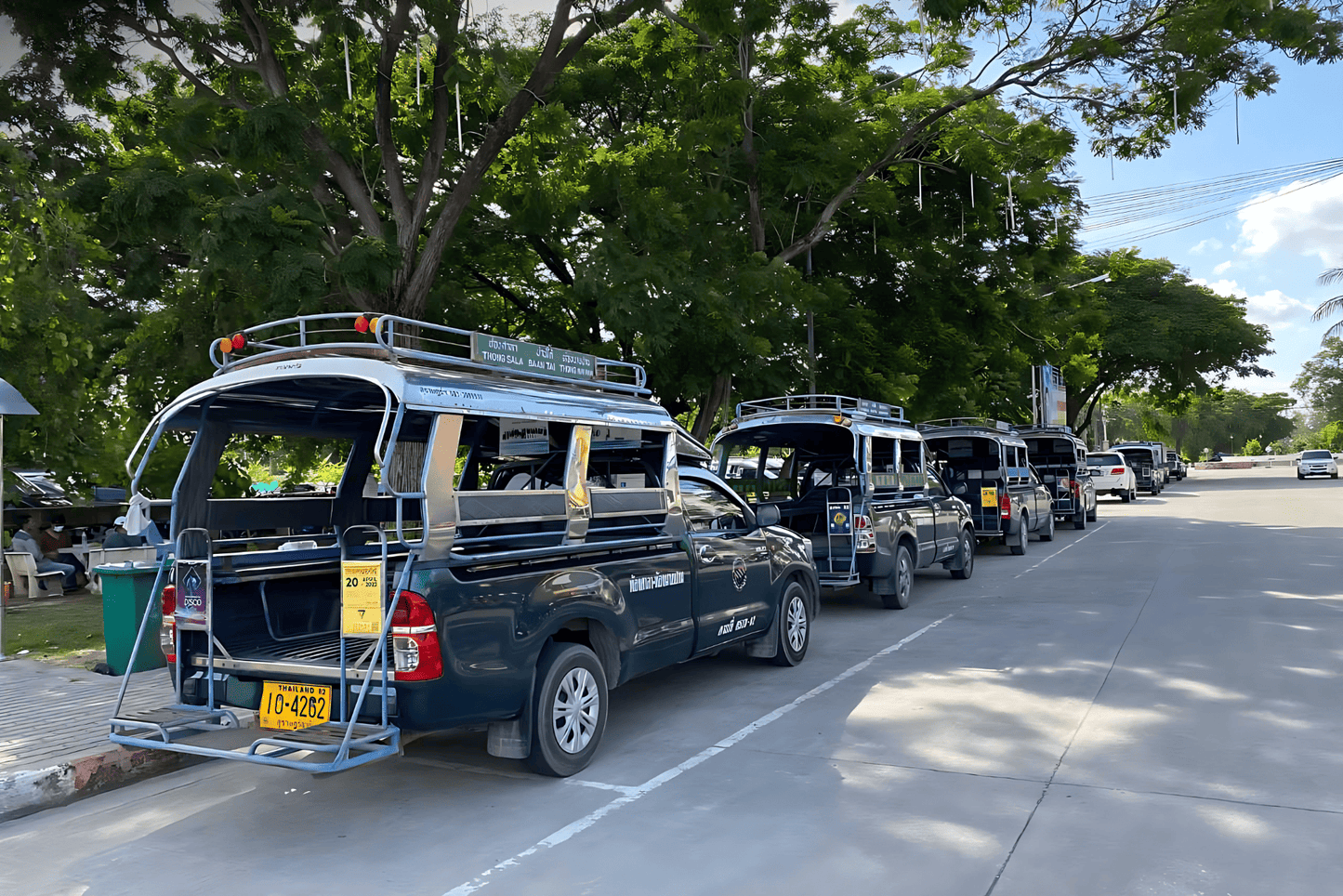Public Transport
Public Transport
Tickets and routes for all kinds of transport: buses, planes, trains, tuk-tuks and more.
Couldn't load pickup availability
Variants
Variants
Description
Description
Thailand’s transport system is lively and diverse — from modern high-speed trains to cozy tuk-tuks, motorbikes, and boats.
In the cities, you’ll easily find regular taxis and buses, while in resort areas ferries and boats connect the islands. The system can feel a bit chaotic and takes some know-how to use well — but that’s exactly what gives it charm.
Land transport
Land transport
Tuk-Tuk.
The ride every tourist mentions first. Strictly speaking, a tuk-tuk is a three-wheeled motor rickshaw, best for short trips around town. Prices are usually a little higher than a regular taxi. Not always the most practical choice, but a tuk-tuk isn’t just transport — it’s an experience, a real taste of Asian street life. Great for soaking up the atmosphere, less so for long distances.
Songthaew.
What many visitors confuse with tuk-tuks are actually “songthaews” (“two benches”). These are shared taxis running on fixed routes, with fares around 10–30 THB. A little warning: if you don't know the route, you could show the point at the map to the driver, but! He would probably understand it as if you want to hire him as a taxi, so.. Be careful.
Motorbike taxis.
Think of them as the practical cousin of the tuk-tuk. You’ll find them near hotels, markets, and busy corners — anywhere they’re needed. Prices are similar to tuk-tuks, sometimes a bit cheaper. A quick way to get around if you don’t feel like ordering a Bolt.
Ride-hailing apps.
The two big players are Grab and Bolt. Grab is more of an ecosystem — you can order food, rent a car, even more. Bolt is the lighter, faster sibling: just rides, nothing extra, and usually cheaper. Choose depending on your needs.
Buses.
Pretty familiar, both inside and in concept. In Thailand, they’re mostly used for intercity travel, though Bangkok has its own network too. From Pattaya, most buses run from 2 places: Jomtien and Center bus stations.
Water Transport
Water Transport
Ferries.
Your best friend on the water: cheap, reliable, and fairly comfortable. The catch? Routes are limited. In Pattaya, for example, ferries only go to Koh Larn. Still, at just 30 THB for a 40-minute ride, it’s a solid deal. First boat leaves at 7:00 AM, last at 6:30 PM from Bali Hai Pier.
Speedboats.
Basically water taxis, priced accordingly. Expect to pay at least 500 THB one-way, so it’s best to go as a group. The upside: you’ll be on Koh Larn in 10–15 minutes. They’re also the only way to reach other islands, since ferries run only to Koh Larn. Keep in mind: most islands are national parks, so entrance fees apply.
Air Transport
Air Transport
Many people think Thailand only has three airports, but in reality there are 39 commercial airports (10 of them international). Still, let’s look at the big three:
- Suvarnabhumi (BKK, Bangkok) — the main international hub.
- Phuket (HKT, Phuket Island) — the largest tourist airport in the south.
- Chiang Mai (CNX, Northern Thailand) — the key airport of the north, gateway to the country’s cultural and historical heart.
For a country that isn’t huge in size, traveling long distances overland can be… let’s just say, not everyone’s cup of tea. Mountainous terrain, patchy infrastructure, and even a gulf right in the middle — all hint that sometimes the smarter way is to fly.
Flights are often seen as expensive, but in Thailand domestic flights can actually be cheaper than going by land — and that’s without factoring in all the time and energy saved. So compare, weigh your options, and make your decision based not on assumptions, but on the facts.
- Full support
- Fair prices
- Redund system
Share



